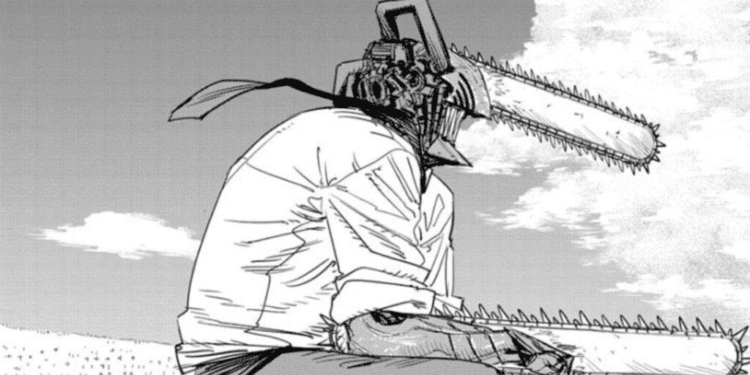In the vast landscape of shonen manga, few series have managed to captivate readers and subvert expectations quite like Tatsuki Fujimoto’s Chainsaw Man. This groundbreaking work has redefined what a shonen manga can be, blending dark themes, unconventional storytelling, and a protagonist unlike any other. Let’s dive into why Chainsaw Man stands out as the most unique shonen manga ever created.


A Fresh Take on the Shonen Formula
Chainsaw Man takes the familiar shonen tropes and turns them on their head. While most shonen protagonists are driven by lofty goals like becoming the strongest or saving the world, Denji’s initial motivations are refreshingly mundane. He simply wants to live a normal life, eat good food, and touch a woman’s chest. This stark contrast to the typical hero’s journey immediately sets Chainsaw Man apart from its peers.
The manga’s unique approach extends to its pacing and narrative structure. Unlike many shonen series that follow a predictable pattern of training arcs and increasingly powerful enemies, Chainsaw Man’s plot twists and turns in unexpected ways. Major characters can die suddenly, alliances shift rapidly, and the stakes continually evolve, keeping readers on the edge of their seats.
Deconstructing the Shonen Hero
At the heart of Chainsaw Man’s uniqueness is its protagonist, Denji. Far from the typical shonen hero, Denji is a complex character whose growth and development challenge reader expectations. His transformation from a desperate, poverty-stricken teenager into the titular Chainsaw Man is just the beginning of his journey.
Denji’s moral compass is far from black and white, and his decisions often blur the line between hero and antihero. This complexity adds depth to his character and forces readers to question their own perceptions of right and wrong. The way Chainsaw Man explores Denji’s psyche and motivations sets it apart from more straightforward shonen narratives.
Subverting Power Dynamics
In many shonen manga, power escalation follows a predictable path. Chainsaw Man, however, subverts this trope by introducing a power system based on fear and contracts with devils. This unique approach to abilities and combat creates a more dynamic and unpredictable narrative, where raw strength isn’t always the deciding factor in conflicts.
Dark Themes and Mature Content
Chainsaw Man pushes the boundaries of what’s typically found in shonen manga, incorporating dark themes and mature content that elevate it beyond its peers. The series doesn’t shy away from graphic violence, complex moral dilemmas, and existential questions about humanity and fear.
This willingness to explore darker territory sets Chainsaw Man apart from more traditional shonen works. It appeals to a wider audience, including older readers who appreciate its depth and complexity. The manga’s ability to balance these mature elements with moments of humor and heart is a testament to Fujimoto’s skill as a storyteller.
Psychological Depth
The psychological exploration of characters in Chainsaw Man adds another layer of uniqueness to the series. Each character, from major players to minor devils, has distinct motivations and fears that drive their actions. This depth of characterization is rare in shonen manga and contributes to the series’ unpredictable nature.
Visual Innovation and Storytelling
Tatsuki Fujimoto’s distinctive art style and innovative panel layouts set Chainsaw Man apart visually from other shonen manga. The series features dynamic action scenes that push the boundaries of what’s possible in manga, with creative use of perspective and motion that brings the chaotic world of devils to life.
Beyond the action, Fujimoto’s ability to convey emotion and atmosphere through his artwork is unparalleled. From quiet moments of introspection to scenes of horror and despair, the visual storytelling in Chainsaw Man enhances the narrative in ways that few other manga achieve.
Cinematic Influences
Fujimoto’s love for cinema is evident in Chainsaw Man’s storytelling techniques. The manga often employs cinematic transitions, visual metaphors, and pacing that feel more akin to film than traditional manga. This unique approach to visual narrative further distinguishes Chainsaw Man from its shonen contemporaries.
Cultural Impact and Fan Engagement
The uniqueness of Chainsaw Man extends beyond its content to its impact on manga culture and fan engagement. The series has sparked countless discussions, theories, and fan works, creating a vibrant community around its complex world and characters.
Chainsaw Man’s popularity has also influenced the broader manga industry, encouraging publishers and creators to take more risks with their storytelling and themes. The success of this unconventional series has opened doors for other unique and boundary-pushing works in the shonen genre.


Chainsaw Man stands as a testament to the evolving nature of shonen manga. Its unique blend of dark themes, complex characters, innovative storytelling, and visual creativity sets it apart as the most distinctive series in the genre. By challenging conventions and pushing boundaries, Chainsaw Man has not only captivated readers but also redefined what shonen manga can be.
As the series continues to unfold, it’s clear that Chainsaw Man will leave a lasting impact on the manga landscape. Its influence can already be seen in newer works that dare to break from traditional formulas and explore darker, more complex narratives.
For manga fans, chainsawmanga.net offers a fresh and exhilarating reading experience that defies expectations at every turn. It’s a series that rewards close reading and analysis, inviting readers to engage with its themes and characters on a deeper level than most shonen manga.
Have you experienced the unique world of Chainsaw Man? We’d love to hear your thoughts on how this groundbreaking manga has impacted your perception of the shonen genre. Share your experiences and favorite moments in the comments below, and let’s celebrate the innovative spirit that makes Chainsaw Man truly one of a kind.

































